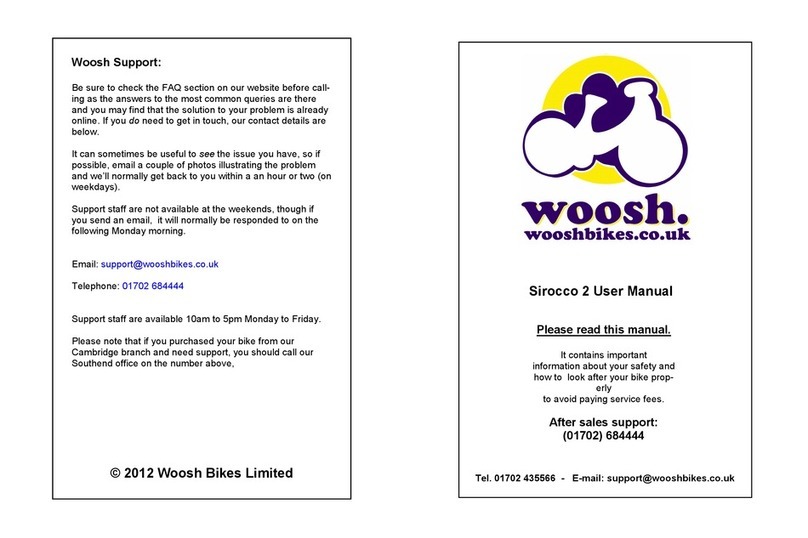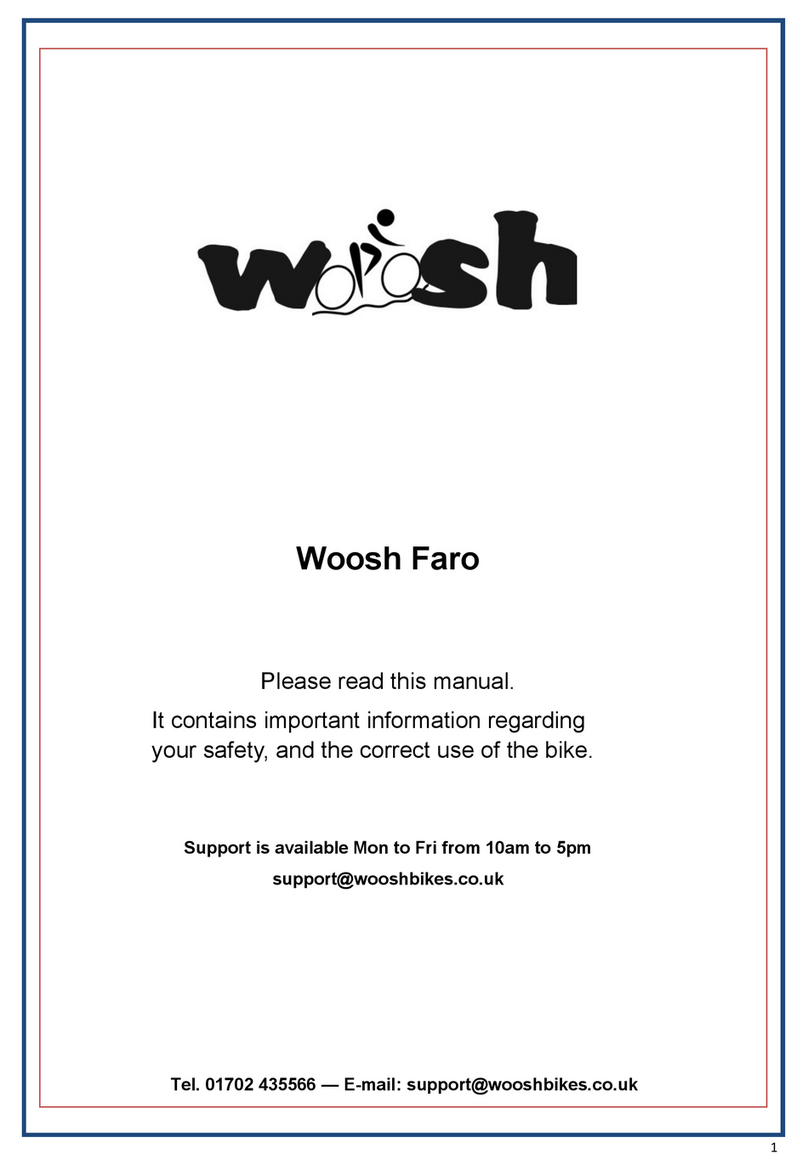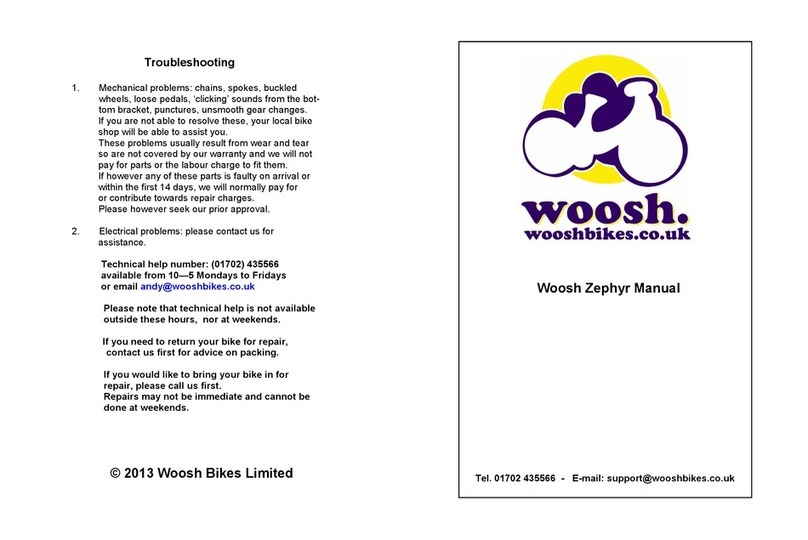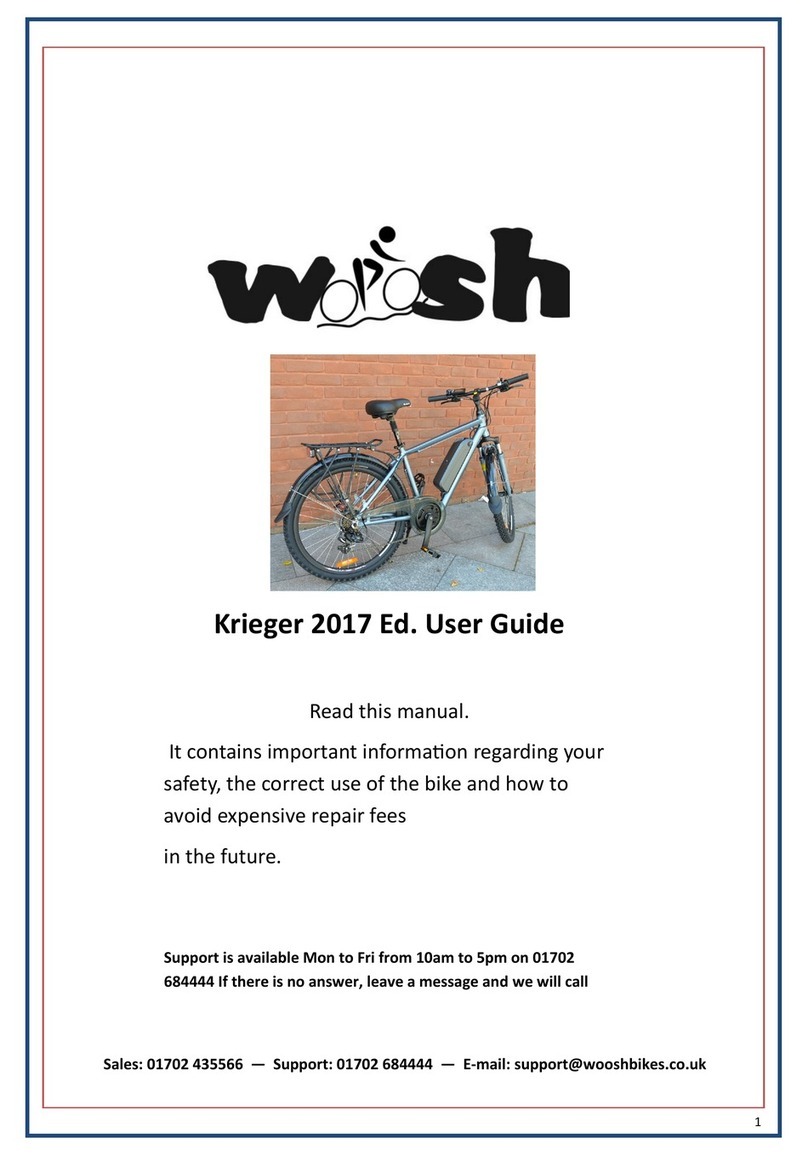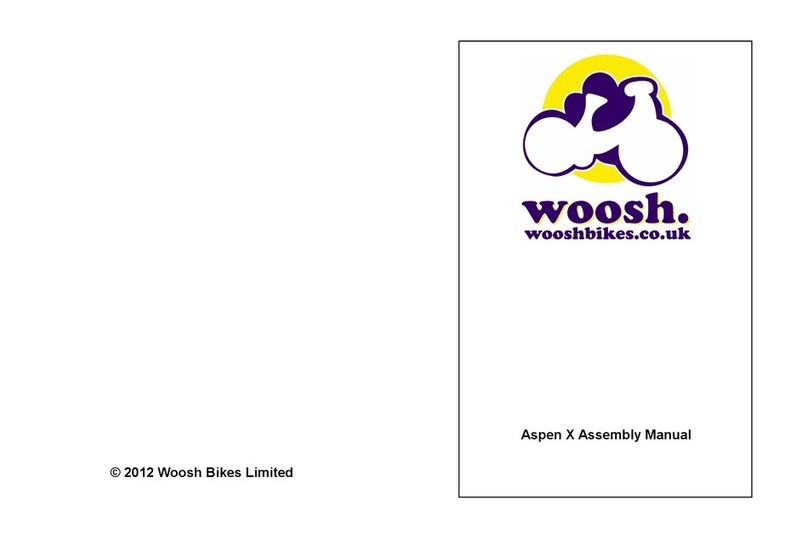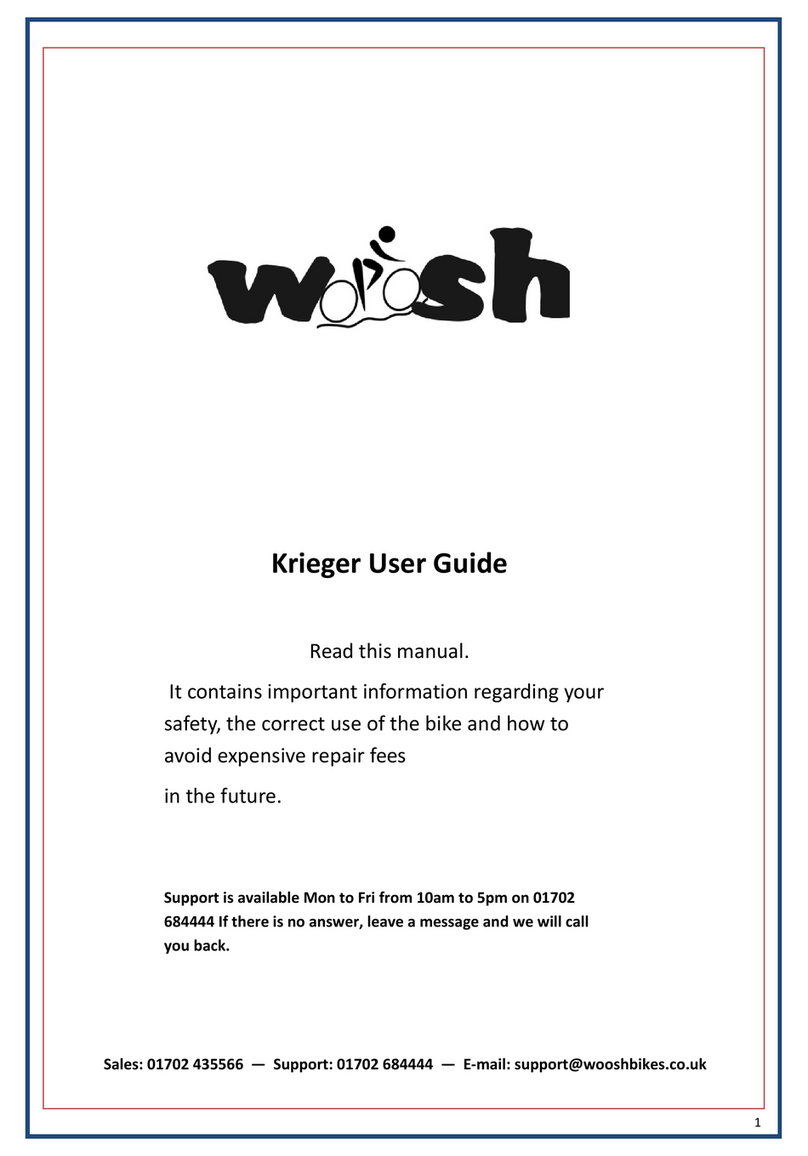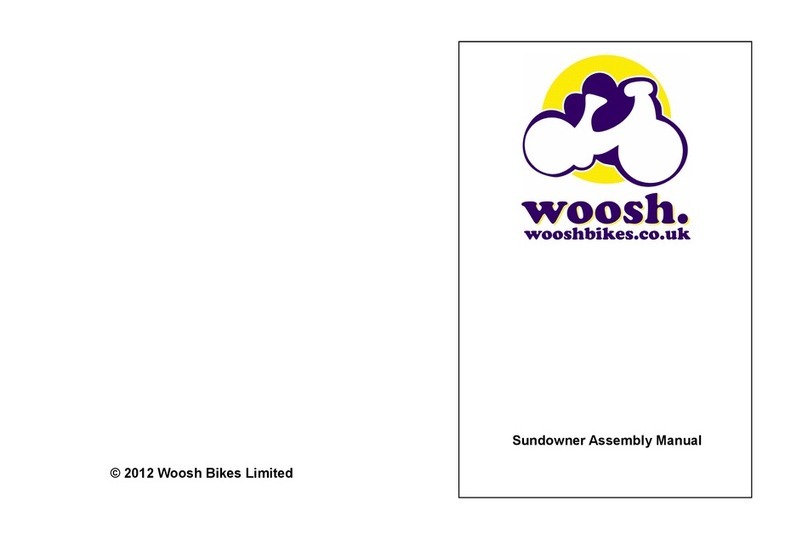8
Battery care:
The Zephyr comes with a modern light-weight lithium battery.
Some care is needed to ensure your battery performs at its best and lasts as long as possible. All batter-
ies age over time, meaning that the range will gradually decrease as the battery gets older, so to ensure
you get the most from your battery, follow the instructions below.
Charge the battery once or twice per week as needed, it is better to keep the battery topped up than to
allow it to run completely flat.
DO NOT charge the battery in extremely cold conditions. If the battery is not in regular use i.e. over the
winter, you should charge the battery for around 10 minutes every two to three weeks. This will slow the
aging process and will help the battery to last longer. When the bike is to be put back into service, fully
charge the battery to prepare it regular use.
General battery care:
Do not attempt to open the outer casing of the battery.
Do not attempt to repair the battery.
Do not immerse the battery in water.
Keep the battery away from children.
Do not drop, pierce or otherwise damage the battery.
Ensure the battery is not exposed to temperatures above 55 degrees Celsius or extreme humidity.
Do not use the bike in an environment where temperatures are below minus 5 degrees Celsius.
Important:
Although our bikes are checked prior to despatch, you must fully inspect your bike again yourself before
riding it, and satisfy yourself that it is correctly assembled and safe to ride. If you are not experienced and/
or are not absolutely sure about any aspects of your bike, you should take it to your nearest bike shop to
have it checked before riding it. Obviously the bike shop will you charge for this service. Woosh Bikes will
not reimburse you for these costs.
Before riding your bike, check the tyre pressures. The tyres should be inflated to approximately 50psi.
Check that all fixings and major components are tightened sufficiently. Check all nuts, bolts, rear carrier
fixings, crank-bolts, handlebars and seat-post/saddle etc.
You must also ensure that your brakes are working correctly before you ride the bike. If you need to ad-
just your brakes, refer to the “maintenance manual” that came with the bike. If you prefer, you can have
your local bike shop adjust them for you. The brakes are similar to those you would find on a regular non-
electric bike and so any bike shop should be able to adjust them for you. You would obviously have to pay
them for this service.
